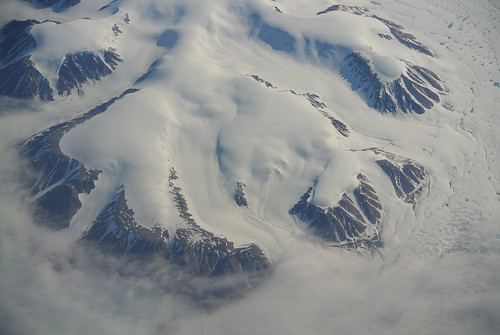Residents flee, airlifts begin as wildfire approaches capital of Canada’s Northwest Territories
Northwest Territories #NorthwestTerritories

YELLOWKNIFE, Northwest Territories — Thousands of residents fled the capital of Canada’s Northwest Territories ahead of an approaching wildfire Thursday, some driving hundreds of miles to safety and others signing up for emergency flights, the latest chapter in Canada’s worst fire season on record.
The fire, boosted by strong northern winds, was within 10 miles of Yellowknife’s northern edge, and people in the four areas at highest risk were told to leave as soon as possible, Fire Information Officer Mike Westwick said.
Officials worried that winds could push the flames toward the only highway leading away from the fire as long caravans of cars evacuated the city of 20,000, and though some rain was forecast, first responders were taking no chances. Westwick urged residents in other areas to leave by noon Friday.
“I want to be clear that the city is not in immediate danger and there’s a safe window for residents to leave the city by road and by air,” Shane Thompson, a government minister for the Territories, said at a news conference. “Without rain, it is possible it will reach the city outskirts by the weekend.”
People are also reading…
Canadian Armed Forces soldiers build a firebreak Wednesday in Parker Recreation Field in Yellowknife, Northwest Territories, Canada.
Master Cpl. Alana Morin, Canadian Armed Forces/The Canadian Press
Canada has seen a record number of wildfires this year — contributing to choking smoke in parts of the U.S. — with more than 5,700 fires burning more than 53,000 square miles from one end of Canada to another, according to the Canadian Interagency Forest Fire Centre.
Officials in parts of the U.S. issued air quality alerts Thursday due to smoke drifting southward.
As of Thursday, 1,053 wildfires were burning across Canada, more than half of them out of control.
In the Northwest Territories alone, 268 wildfires already burned more than 8,100 square miles.
Thursday’s evacuation of Yellowknife was by far the largest so far this year, said Ken McMullen, president of the Canadian Association of Fire Chiefs and fire chief in Red Deer, Alberta.
“It’s one of those events where you need to get people out sooner rather than later,” because fire could block the only escape route before ever reaching the community.
People line up Thursday in Yellowknife, Northwest Territories, Canada, to register for a flight to Calgary, Alberta, Canada.
Bill Braden, The Canadian Press
About 6,800 people in eight other communities in the territory already were forced to evacuate their homes, including the small community of Enterprise, which was largely destroyed. Officials said everyone made it out alive.
A woman whose family evacuated the town of Hay River on Sunday told the CBC their vehicle began melting as they drove through embers, the front window cracked and the vehicle began filling with smoke that made it difficult to see the road ahead.
“I was obviously scared the tire was going to break, our car was going to catch on fire and then it went from just embers to full smoke,” said Lisa Mundy, who was traveling with her husband and their 6-year-old and 18-month-old children. She said they called 911 after they drove into the ditch a couple of times.
She told the CBC her son kept saying: “I don’t want to die, mommy.”
Prime Minister Justin Trudeau convened an urgent meeting with ministers and senior officials Thursday to discuss the evacuation.
Authorities said the intensive care unit at a Yellowknife hospital would close within 24 hours as the Northwest Territories health authority starts to reduce its services. In-patient units from Stanton Territorial Hospital will be moved in the coming days, if required, and most long-term care patients were transferred to institutions to the south, the Health and Social Services Authority said on its website.
Officials said evacuations have so far been safe and orderly, and that evacuees from Yellowknife who can’t find their own accommodations can get support in three centers in the province of Alberta. The closest of those centers is more than 620 miles by road from Yellowknife.
Wildfire smoke fills the air Thursday over Yellowknife, Northwest Territories, Canada.
Bill Braden, The Canadian Press
Officials in Calgary said they’re preparing to take in thousands of evacuees and are opening a reception center at the Calgary airport. A second center was set up at a hotel for those who drive to the city, said Iain Bushell, the city’s director of emergency management.
“We’re all tired of the word unprecedented, yet there is no other way to describe this situation in the Northwest Territories,” Premier Caroline Cochrane posted on X, formerly known as Twitter. She urged residents to obey emergency management officials, traffic control devices and posted speed limits. “The country is watching, and our neighbours are keeping us in their thoughts and prayers.”
The evacuation order issued Wednesday night applies to the city of Yellowknife and the neighboring First Nations communities of Ndilo and Dettah.
Indigenous communities have been hit hard by the wildfires, which threaten important cultural activities such as hunting, fishing and gathering native plants.
Amy Cardinal Christianson, an Indigenous fire specialist with Parks Canada, has said the wildfires “are so dangerous and so fast-moving” that evacuations increasingly are necessary, which is a challenge in remote communities where there might be one road in, or no roads at all.
Get local news delivered to your inbox!